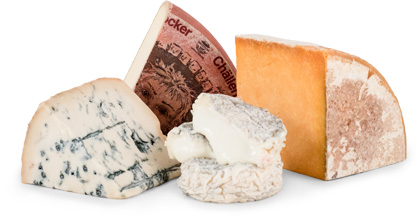In the fall of 1445, Prince Louis of France was on a hunting trip when a bear of tremendous proportions attacked him and his entourage. It must have been a big one, indeed, as the group feared for their lives, despite their numbers and numerous firearms. Fortunately, two loggers heard their cries (or, um, manly, royal bellows) and came to the rescue of Prince Louis and his party. After the harrowing incident, and the demise of their ursine attacker, Prince Louis broke bread with the loggers. During their meal, they introduced him to St. Marcellin cheese. Or so the story goes.
Perhaps it was the trauma of his experience or the excitement in retelling such a good tale, but Prince Louis never forgot this remarkable, hard-to-find cheese, nor did he ever tire of eating it! When the Prince returned to Paris to be crowned King Louis XI, he brought St. Marcellin cheese makers with him and, as a result, this cheese has been enjoyed by members of French society for more than 500 years. This small, round cheese is produced only in the area of southeastern France known as Dauphiné, and was originally made using goat’s milk. These days, however, most is crafted with cow’s milk. True to its rustic legend, St. Marcellin is most often found wrapped in chestnut or grape leaves, which turn from fresh green to a dark brown as the cheese ripens. St. Marcellin’s rather delicate flavors are in stark contrast to the brash events surrounding Prince Louis’ discovery of this cheese. The version we’ve chosen for you has been dipped in wine or eau-de-vie (a colorless brandy distilled from fruit juice), has a beige crust with blue mold, a soft, beige, creamy interior, and an intense nutty flavor. When ripe, it is quite runny with a slightly yeasty taste. It’s also irresistible. It’s been declared “a cheese to worship” by some. We’re pretty confident that King Louis XI would have agreed!
St. Marcellin can be found in many stages of affinage, or maturity, ranging from the fresh to the very ripe. Like many cheeses, as St. Marcellin matures the flavor becomes more pronounced, yet still remains overall mild, slightly acidic, and salty, with some nutty flourishes. As this cheese comes from the Rhone-Alpes region of France, one might expect it to partner nicely with any Rhone red wine, and one would be right. Temperature can have a big impact on the flavor and overall character of cheese—we suggest you enjoy this cheese at a temperature where the interior clings to the knife. We hope you thoroughly enjoy experiencing the delicate flavors of this truly noble cheese! It's an impressive addition to any cheeseboard and is splendid when served as an appetizer or snack accompanied by olives and a good, coarse salami.

Experience International Variety
You might receive a Gaperon, originating in France during the 14th Century, an
authentic Lancashire by Ruth Kirkham, and an Italian Taleggio matured in the
caves of Valsassina…all in one shipment!

